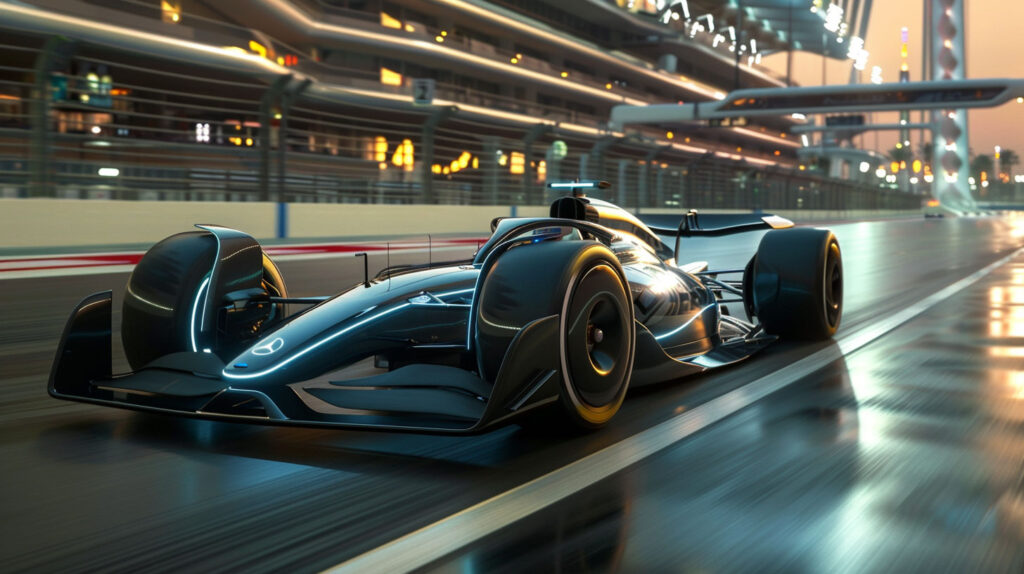
In a groundbreaking event at Abu Dhabi’s Yas Marina Circuit, a Formula 1 driver took on an unprecedented challenge—racing against not one, but four self-driving cars. This marked a monumental moment in both automotive and AI technology.
The Dawn of Autonomous Racing
The spectacle in Abu Dhabi wasn’t just a race; it was a vivid portrayal of the future, melding high-speed motorsports with cutting-edge artificial intelligence. Imagine the scene: sleek, driverless vehicles lining up on the grid, their sensors and systems fine-tuned, ready to challenge human skill with robotic precision. This race was more than a competition; it was a demonstration of how far AI has progressed in understanding and executing complex tasks like high-speed racing. Engineers and developers from around the globe watched as their algorithms were put to the ultimate test, navigating sharp turns and managing breakneck speeds that push the very limits of today’s technology.
As the race commenced, the autonomous cars showcased an incredible level of sophistication in their navigation systems. Each vehicle operated under its own set of AI protocols, making split-second decisions without human intervention. This was not just about speed but also about the precision of machine learning models that can calculate the optimum racing line, adjust to dynamic conditions, and even react to the unpredictability of competing against a human-driven vehicle. The AI systems were trained using thousands of hours of driving data, simulating every possible scenario on the track to ensure both competitiveness and safety.
Implications for the Future of AI and Motorsport
This landmark race has significant implications for the future of transportation and motorsport. For one, it provides a clear benchmark of where AI technologies stand against human capabilities. The performance of these autonomous vehicles under high-pressure and high-speed conditions serves as a testament to the advancements in machine learning, sensor technology, and data analytics. It’s a proof of concept that AI can handle complex, real-world tasks with efficiency and precision, paving the way for further integration of AI in everyday vehicular technology.
Furthermore, the integration of AI into racing could revolutionize the sport by making it safer and more strategic. With AI in the mix, race strategies could evolve dramatically, focusing on data-driven decisions to enhance performance and reduce risks. Autonomous racing could also lead to developments in consumer vehicle safety features, as technologies proven on the racetrack often make their way into passenger cars. Imagine a world where your vehicle not only gets you from point A to point B but also incorporates the advanced tactical nous of a Formula 1 strategy team.
Moreover, this event raises intriguing questions about the future relationship between man and machine. Will AI eventually surpass human skills in more than just racing? And how will this influence our relationship with machines? This race in Abu Dhabi has not just pushed the envelope for autonomous vehicle technology; it has reignited the age-old debate about the limits of human and machine potential.
Conclusion
The first-ever race between a Formula 1 driver and self-driving cars in Abu Dhabi was not just a test of speed but a significant milestone in the journey of AI. As we stand on the brink of what could be a revolution in both AI and motorsport, the possibilities for what comes next are as thrilling as they are limitless.
